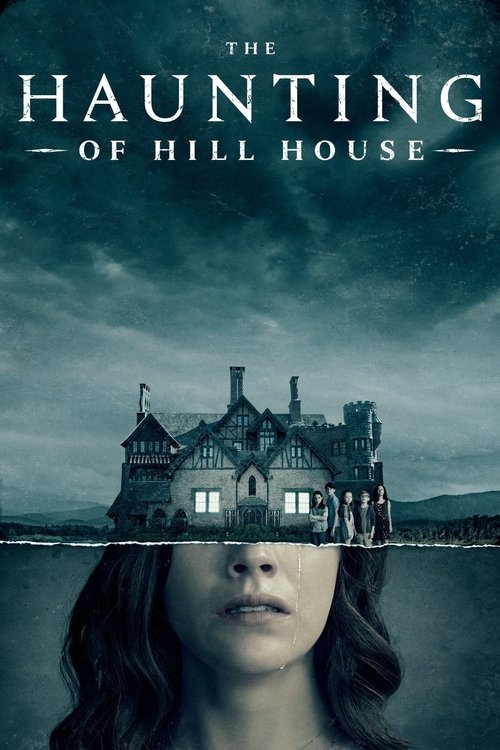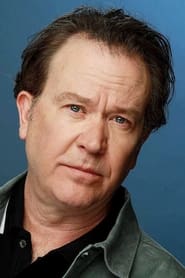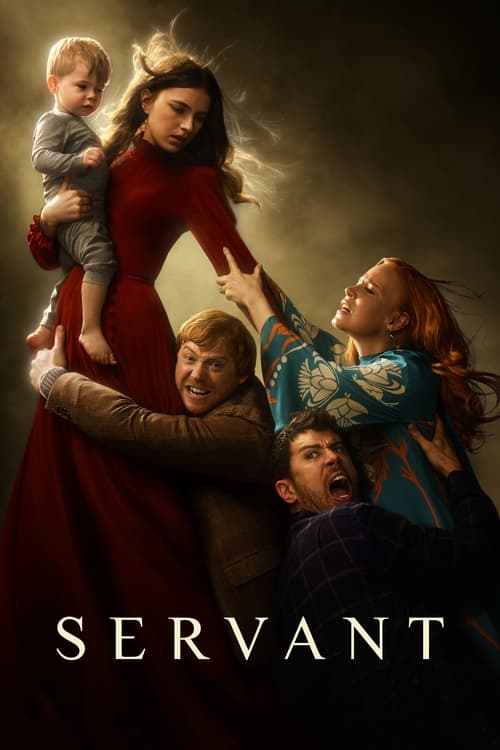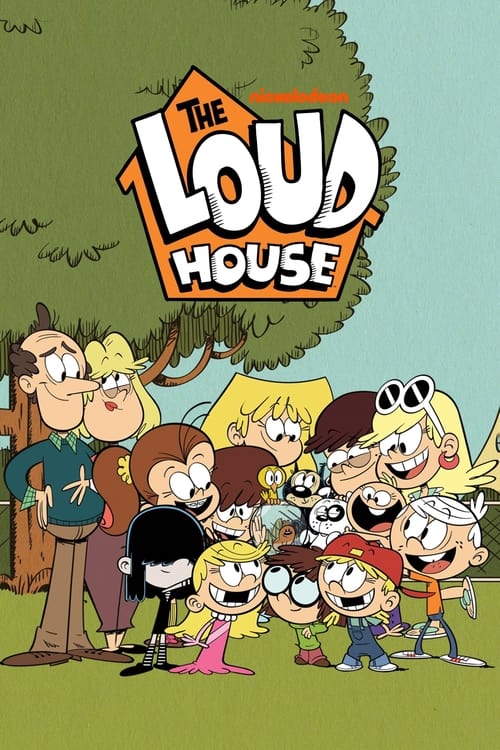
Ask Your Own Question
What is the plot?
The story begins in the present day with a group of adult siblings--Steve, Shirley, Theo, and Luke--gathering for a funeral. Their mother, Olivia, has passed away, and the siblings are haunted by their traumatic childhood experiences at Hill House, where they lived with their parents, Hugh and Olivia Vance. The siblings have varying degrees of estrangement and unresolved issues stemming from their time in the house.
Flashbacks reveal the family's arrival at Hill House in the late 1990s. Hugh and Olivia, along with their five children--Steve, Shirley, Theo, Luke, and baby Nell--move into the sprawling, eerie mansion to renovate it and sell it for a profit. The children are initially excited, but the house quickly reveals its sinister nature. Strange occurrences begin to unfold, including unsettling noises and ghostly apparitions.
As the family settles in, Olivia becomes increasingly affected by the house. She experiences visions and begins to lose her grip on reality. One night, she is drawn to the red room, a mysterious space in the house that seems to change its appearance and is locked to the children. Olivia's mental state deteriorates, and she becomes obsessed with the idea of keeping her family together, believing that the house is a place of safety.
Meanwhile, the children experience their own hauntings. Theo, who has a psychic ability to sense emotions, encounters a ghostly figure in the house. Luke, struggling with addiction, is often seen wandering the grounds, while Steve, the eldest, tries to rationalize the supernatural events. Shirley, the responsible sister, tries to maintain order and protect her siblings, but she is also haunted by her own experiences.
One night, Olivia's behavior becomes increasingly erratic. She locks the children in the red room, believing it to be a safe haven. Hugh, realizing the danger, tries to intervene, but Olivia becomes violent. In a desperate attempt to save his children, Hugh manages to escape with them, leaving Olivia behind. This traumatic event leads to Olivia's death, which is shrouded in mystery.
In the present, the siblings confront their past as they deal with their mother's death. Steve, a successful author, is writing a book about their experiences at Hill House, which causes tension with his siblings. Shirley runs a funeral home and struggles with her own grief, while Theo, who has distanced herself from the family, grapples with her psychic abilities. Luke, still battling addiction, is in and out of rehab.
As the story unfolds, the siblings begin to experience flashbacks that reveal more about their time in Hill House. They remember the night their mother died and the events leading up to it. The red room is revealed to be a central figure in their trauma, as it holds the key to their family's dark history.
The narrative shifts back and forth between the past and present, showing how the siblings cope with their shared trauma. They each have their own ways of dealing with the haunting memories, but they are ultimately drawn back to Hill House for closure. Luke, in particular, is determined to confront his demons and return to the house.
In a climactic sequence, the siblings gather at Hill House for the first time since their childhood. They confront the ghosts of their past, both literal and metaphorical. As they explore the house, they are confronted by the spirits that have haunted them for years. The red room reveals its true nature, showing that it is a manifestation of their fears and desires.
During this confrontation, the siblings must face their individual traumas. Steve realizes that his need to rationalize everything has kept him from truly understanding his family's pain. Shirley confronts her need for control, while Theo learns to embrace her abilities rather than fear them. Luke faces his addiction and the impact it has had on his family.
In the final moments, the siblings come together to support each other, breaking the cycle of trauma that has haunted them for so long. They acknowledge their mother's struggles and the impact of Hill House on their lives. The house, once a source of fear, becomes a place of healing as they find closure and begin to move forward.
The series concludes with the siblings leaving Hill House, having faced their past and emerged stronger. They understand that while the memories of their childhood will always be a part of them, they can now choose to live their lives free from the shadows of the house.
What is the ending?
In the ending of "The Haunting of Hill House," the Crain family confronts their traumatic past and the haunting legacy of Hill House. Eleanor "Nell" Vance, who has been deeply affected by the house, ultimately sacrifices herself to save her siblings. The family comes together to face their fears, and they find a sense of closure. The story concludes with the siblings moving forward in their lives, having reconciled with their shared experiences and the ghosts of their past.
As the final episodes unfold, the narrative shifts back and forth between the present and the past, culminating in a powerful confrontation with the family's history.
In the present, we see the Crain siblings--Steven, Shirley, Theo, and Luke--gathering at Hill House for the first time since their childhood. The house looms ominously, a character in its own right, filled with memories and the lingering presence of their mother, Olivia, who succumbed to the house's dark influence. Each sibling carries their own emotional baggage, shaped by their experiences in Hill House.
The tension escalates as they confront the reality of their mother's death and the trauma they endured. Steven, the eldest, struggles with his role as the rational skeptic, often dismissing the supernatural elements that haunt his siblings. Shirley, the caretaker, grapples with her need for control and her unresolved grief. Theo, the intuitive one, is haunted by her past and her inability to connect with others. Luke, the youngest, battles addiction and the shadows of his childhood.
As they delve deeper into the house, they are confronted by their fears and the manifestations of their past. The siblings begin to experience vivid flashbacks, revealing the events leading to their mother's tragic fate. Olivia, portrayed as a loving yet increasingly unstable figure, becomes a central focus. Her descent into madness is depicted through haunting visions and emotional turmoil, showcasing her struggle to protect her children from the malevolent forces within Hill House.
In a climactic moment, Nell, who has been particularly affected by the house, becomes the focal point of the haunting. She is drawn to the Red Room, a space that has been a source of mystery and terror throughout the series. In a poignant scene, Nell confronts her own demons, believing she is destined to reunite with her mother. The siblings, realizing the danger Nell is in, rush to save her.
As they reach the Red Room, they find themselves trapped in a whirlwind of memories and emotions. The house reveals its true nature, forcing each sibling to confront their past and the pain they have carried. In a moment of self-sacrifice, Nell embraces the darkness, allowing herself to be consumed in order to save her siblings. Her act of love and bravery becomes a turning point, breaking the cycle of trauma that has haunted the Crain family.
In the aftermath, the siblings emerge from the house, forever changed but united in their shared experience. They find solace in each other, acknowledging the pain of their past while also recognizing the strength they have gained. Steven, who has often been dismissive of the supernatural, begins to understand the depth of their experiences. Shirley learns to let go of her need for control, while Theo opens up to the possibility of connection. Luke, having faced his addiction, finds a renewed sense of purpose.
The series concludes with a sense of hope. The Crain siblings leave Hill House behind, but they carry with them the lessons learned from their haunting experiences. They are no longer defined by their trauma; instead, they embrace the love and resilience that binds them as a family. The final scenes depict them moving forward, ready to face the future together, having finally confronted the ghosts of their past.
Is there a post-credit scene?
The Haunting of Hill House does not have a post-credit scene. The series concludes with its final episode, "Silence Lay Steadily," which wraps up the storylines of the Crain family and their experiences in Hill House. The focus is on the resolution of their traumas and the impact of their past, rather than any additional scenes after the credits. The emotional weight of the series is encapsulated in the final moments, leaving viewers with a sense of closure regarding the characters' journeys.
What is the significance of the red room in Hill House?
The red room is a pivotal location in 'The Haunting of Hill House.' It serves as a manifestation of the family's fears and desires, appearing differently to each character. For example, to Luke, it is a place of comfort filled with toys, while for Eleanor, it becomes a space of entrapment. The room symbolizes the house's ability to manipulate and control its inhabitants, revealing their deepest vulnerabilities.
How does the character of Shirley Vance cope with her family's trauma?
Shirley Vance, the eldest sibling, copes with her family's trauma by becoming a funeral director, channeling her grief into helping others process death. She often appears stoic and practical, but beneath her composed exterior, she struggles with the emotional weight of her family's past. Her need for control and order often leads to conflict with her siblings, particularly when they confront the supernatural elements of their childhood.
What role does the character of Hugh Crain play in the family's dynamics?
Hugh Crain, the father, is a complex figure whose motivations are deeply intertwined with the family's trauma. He is portrayed as protective yet flawed, often struggling to shield his children from the horrors of Hill House while grappling with his own guilt and denial. His decisions, particularly regarding the house and its haunting, create rifts between him and his children, especially with his daughter, Shirley, who feels abandoned by his choices.
How does the character of Theo develop throughout the series?
Theo, the second eldest sibling, is portrayed as fiercely independent and emotionally guarded. Throughout the series, her character develops as she confronts her past and the trauma of Hill House. Initially relying on her ability to sense emotions through touch, she learns to open up and connect with her siblings. Her journey reflects a struggle between her desire for intimacy and her fear of vulnerability, culminating in her acceptance of her family's shared pain.
What is the relationship between Luke and his addiction in the story?
Luke's struggle with addiction is a central theme in his character arc. Initially depicted as a vulnerable child, his experiences in Hill House lead him to substance abuse as a coping mechanism for his trauma. His addiction creates a rift between him and his family, particularly with Shirley, who feels a sense of responsibility for him. Throughout the series, Luke's journey highlights the cyclical nature of trauma and the challenges of recovery, ultimately leading to moments of both despair and hope.
Is this family friendly?
The Haunting of Hill House is not considered family-friendly and contains several potentially objectionable or upsetting scenes that may be distressing for children or sensitive viewers. Here are some aspects to be aware of:
-
Intense Horror Elements: The show features numerous jump scares, eerie atmospheres, and unsettling imagery that can be frightening.
-
Death and Grief: Themes of loss, mourning, and the impact of death on a family are central to the narrative, which may be emotionally heavy for younger viewers.
-
Mental Health Issues: Characters struggle with trauma, anxiety, and depression, which are depicted in a raw and sometimes distressing manner.
-
Violence: There are scenes that include physical confrontations and moments of violence, which can be graphic and disturbing.
-
Supernatural Themes: The presence of ghosts and supernatural occurrences may be frightening, particularly for children who are sensitive to such themes.
-
Substance Abuse: Some characters deal with substance abuse as a coping mechanism for their trauma, which may not be suitable for younger audiences.
-
Family Conflict: The show explores deep-seated family issues, including arguments and emotional breakdowns, which can be intense and uncomfortable to watch.
Overall, the series delves into complex emotional and psychological themes, making it more appropriate for mature audiences.

































